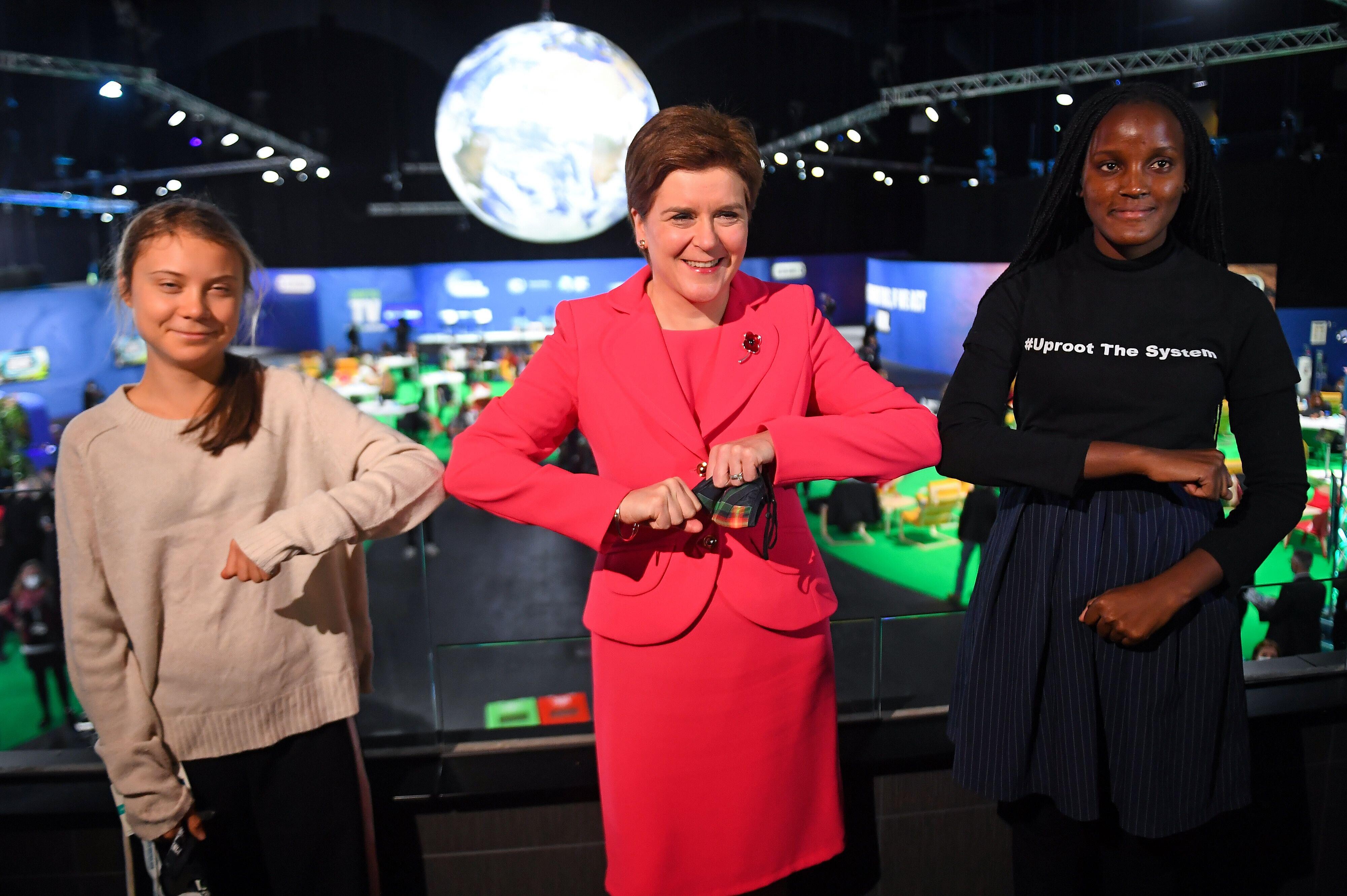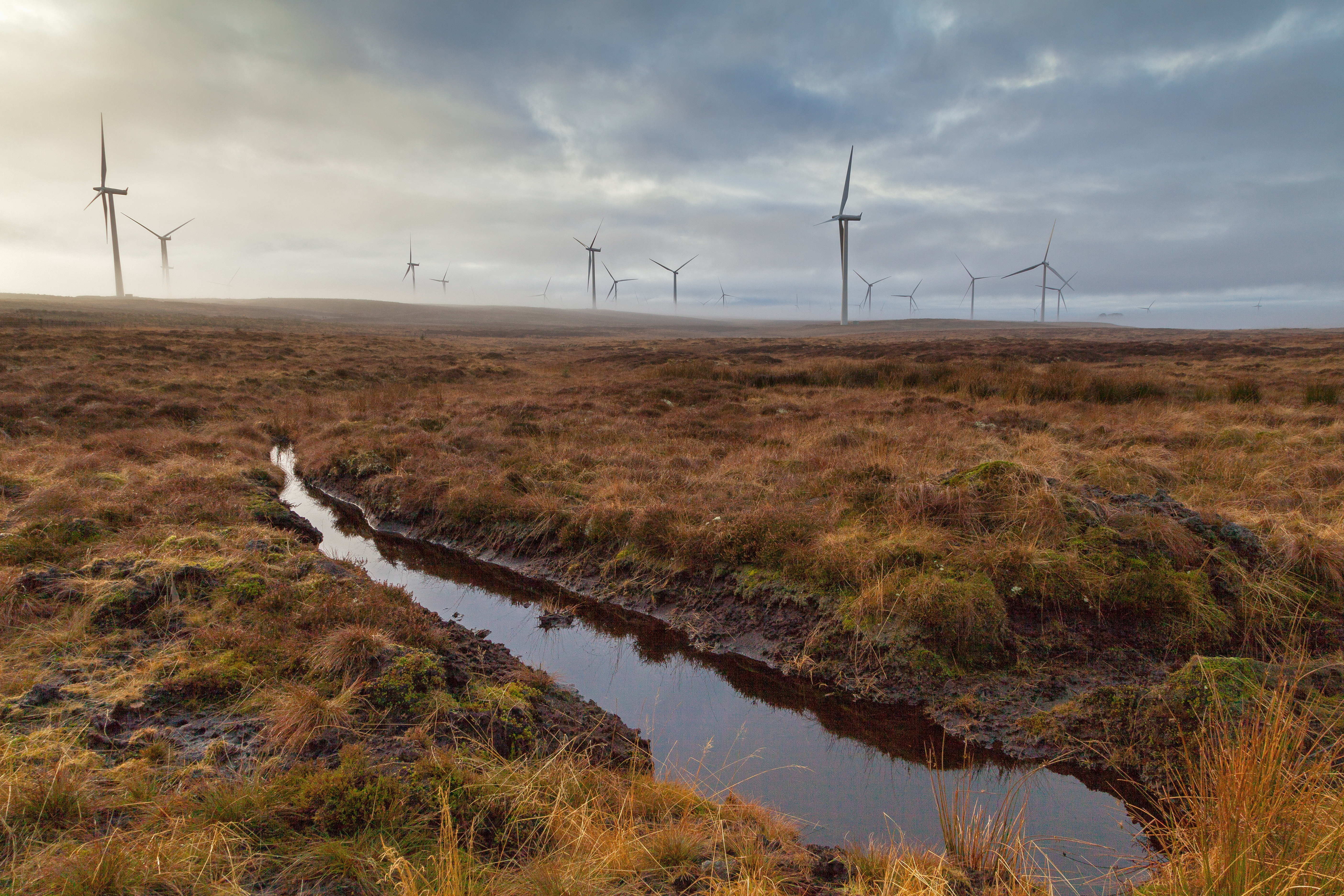Power of Scotland: Can one small nation lead the global fight against climate change?
Twenty miles from the centre of Glasgow is one of the great sights of modern Scotland. The Whitelee wind farm, the UK’s largest, is a vast agglomeration of turbines stretching across the land in every direction.
Seen from the air, the turbines are skinny little figures that seem to be waving their arms in greeting, but from the ground, these massive towers are mighty monuments to the awesome power of the wind.
Harnessing that power has transformed Scotland’s electricity supply. The opening of Whitelee and dozens of other wind farms have caused carbon emissions associated with electricity generation to plummet in the last 15 years.
Scotland now generates nearly all the electricity it needs from renewable sources, up from 37 per cent in 2011, putting the country in the premier division of renewable energy generators. In Europe, only Iceland and Norway produce more renewable electricity than Scotland.
Scotland also has some of the most ambitious climate legislation in the world.
But by no means all aspects of Scotland’s effort on climate change can be judged a success.

Nicola Sturgeon meets Greta Thunberg and Vanessa Nakate at COP26 | Image: PA
As world leaders descend on Glasgow for COP26, the Scottish Government has been talking up Scotland’s record and its importance as a role model for other nations. According to the Scottish Government last July, “Scotland is leading the way in the transition to a carbon neutral world”.
Experts and activists acknowledge the successes, but they also point to the problems and failures. They warn that Scotland has repeatedly missed key emissions reduction targets and that emissions are going up in some major sectors.
Perhaps above all, they worry that the challenges of the next 10 years will be much tougher than those of the last 10, just as the window to prevent the catastrophic effects of climate change closes.
“If we want a world where temperature rises are kept to 1.5 degrees, and everyone does the same as Scotland, then we won’t keep to 1.5 degrees,” declares Dr Richard Dixon of Friends of the Earth Scotland.
“In terms of emissions reduction targets, we are one of the best. But we’re still not doing enough.” He adds: “We are the best of a bad bunch.”
Prof Iain Stewart, geologist, UNESCO chair of geoscience and society, and presenter of BBC science documentaries, was an expert on the evidence group for Scotland’s Climate Assembly, a citizens’ assembly convened to discuss the way forward for Scotland in tackling climate change in a fair way.
He says: “I think we can say we are an example to other nations, but I don’t think we should be saying we are absolutely the leader in this. I think there’s a lot of stuff we need to sort out.
“And I don’t think we’ve had that national conversation yet about the kind of Scotland we want. The transition between the North Sea past and that renewable future has been dealt with very lightly across the political spectrum.”
He believes Scots are open to that conversation, having seen how engaged assembly participants became. Sometimes, they became deeply emotionally involved. He recalls one session where an older participant was moved to tears and had to leave the virtual room. Her distress came from the realisation that younger people were dealing with the consequences of climate change due to inaction by earlier generations.
By the end of the assembly, participants were so engaged that they were discussing embodied emissions in buildings.
Stewart believes politicians should take courage from that: “It underlines the point that if you sit down and explain this to people, they get it. “That’s the bit that’s missing.”
Scotland, like many other countries, has been on an ambition escalator over the last two decades. The Labour-Lib Dem Scottish Executive established a target in 2003 for 40 per cent of Scotland’s electricity to be derived from renewables by 2020, described as “ambitious” by environmental groups at the time.
In 2009, a landmark Climate Change Act was passed under the SNP, setting a target for reducing carbon emissions. It followed the UK act of 2008, the first in the world setting legally binding targets, but went a bit further, committing Scotland to the same 80 per cent emissions cut on 1990 levels by 2050, but also a 42 per cent cut by 2020.
It also required annual targets to be set, and took account of emissions from aviation and shipping.
Scotland’s emissions were 42 per cent down on 1990 levels by 2015.
Then in 2019 Nicola Sturgeon declared a “climate emergency” and a new target was set, for Scotland to be “net zero” by 2045. The Climate Change (Emissions Reduction Targets) Act 2019 also sets revised interim targets of 75 per cent reduction by 2030 and 90 per cent by 2040.
Dixon sees the value of setting ambitious targets, since they are motivational. But he is concerned that this year, Scotland has missed its target for the third year running.
George Tarvit is director of the Sustainable Scotland Network, the network for public sector action on climate change, at the Edinburgh Climate Change Institute. He says Scotland has invested a great deal in tackling climate change and that the idea of reaching net zero has resonated with decision-makers across the public and private sectors, motivating many of them to do more. “Our electricity grid is hugely cleaner than it was a decade ago,” he reflects.
“But what this has highlighted is the lack of progress on transport, heating, buildings and land use.”
He adds: “Everybody is looking at the pathway to 2045 and the near-term target at 2030 and I think it would be hard to say we are a beacon of inspiration on some of the challenges ahead. Transport and heating are huge issues.
“We’ve got the political statements, we’ve got the legislation in place, we’ve set extremely ambitious targets and keep ratcheting them up, but the big challenge is in delivery.”

Whitelee windfarm in East Renfrewshire | Image: AdobeStock
Heating buildings currently accounts for a fifth of emissions in Scotland. The Scottish Government wants that cut by two thirds by 2030, which will require more than a million homes and 50,000 non-domestic buildings to have zero or low emissions heat – a massive challenge.
Agriculture and industry are other big problematic areas where limited progress has been made.
But the biggest single problem is transport. It accounted for 37 per cent of emissions in 2017.
Dixon is heartened by Scottish Government commitments including efforts to turn Scotland’s bus fleet electric and to reduce car kilometres by 20 per cent by 2030. The Scottish Government is also committing to spending 10 per cent of the travel budget on active travel.
But alongside certain strong climate mitigation policies, he sees an unwillingness to take difficult but necessary decisions, for instance on oil extraction.
“The Scottish Government has a dual view. They want to be a world leader on renewables, but also want to keep pumping oil and gas.”
Activists are disappointed that the First Minister has not been willing to come out against the development of new oil and gas fields, in spite of the UN and the International Energy Agency declaring such developments should end this year. Controversy has swirled around the new Cambo oil field off Shetland.
Dixon perceives the opposition of SNP politicians in north east Scotland as being behind Sturgeon’s hesitancy, but finds it “very frustrating”: “This, the year of COP, could have been the year it happened, when she could have said ‘no more new developments’.
“She says there’s a climate emergency, but she’s not really acting like there’s a climate emergency.” He hopes she might still come round.
Scotland has much more to do, then. But a nation doesn’t have to be perfect to exert a positive influence on others. One way it can have an impact is in setting an example in individual sectors, notes Dixon.
In this respect, others can learn from Scotland, but Scotland but can also learn from others.
Norway, a fellow northern European nation of similar size, expects to have sold its last new petrol or diesel car as soon as next April, according to the Norwegian Automobile Federation.
This has particular saliency for Scotland, since Scotland’s size and rural nature is sometimes held up as a barrier to rolling out electric vehicles when Norway is much bigger and even less urbanised.
Malta is making all bus travel free for residents and Luxembourg has made all public transport free. Denmark and Belgium, meanwhile, are nations of cyclists, an area where Scotland has huge room for improvement.
“If every country in Europe did as well as Norway on electric vehicles, Denmark on cycling and Scotland on renewables, it would be a truly huge step in the right direction,” says Dixon.
Developing countries can also light the way: Morocco, for instance, has one of the world’s most ambitious renewable energy targets and the world’s largest concentrated solar power farm.
Stewart, who recently became El Hassan bin Talal research chair in sustainability at the Royal Scientific Society of Jordan, says of Scotland: “We’ve got lots of energy options, but many countries don’t have those options. And the impacts in Scotland are going to be a fraction of what the impacts are going to be in other countries.
“I’m here in Jordan, the second most water-scarce country in the world, which imports 93 per cent of its energy. The room for manoeuvre in a country like Jordan is very limited compared to the room to manoeuvre in a country like Scotland.”
But he sees an important role for Scotland in “pairing up” with countries facing greater climate change challenges. He notes that the Royal Scottish Geographical Society, of which he is president, is involved in translating its climate solutions training programme for businesses, into Arabic.
“We’re going to aim it at business leaders and local government officials, because the awareness of climate change and sustainability in a place like Jordan is way, way lower than it is in a place like Scotland.”
The Scottish Government funds climate justice projects in Malawi, Zambia and Rwanda.
Stewart was struck by the importance placed by climate assembly participants on social justice.
He says: “One thing that emerged about fairness pretty quickly is that it shouldn’t just be about Scotland, that the discussions that we were having were global and Scots were global citizens.
“There wasn’t a sense that we wanted to be self-congratulatory.”
Small countries can also make powerful interventions at conferences like COP. Dixon vividly remembers one conference where the representative of the Marshall Islands in Micronesia called on Australia, a notorious reactionary on climate change, to save space for them for when the islands went under.
And small countries can work together as a bloc to make bigger nations sit up and take notice, as with the Beyond Oil & Gas Alliance, co-chaired by Denmark and Costa Rica, both of which have ended new oil and gas developments. They are committed to bringing together other governments to commit to a just transition.
So Scotland has a broad role to play in tackling climate change. The immediate question, though, is how delegates at COP will perceive their host nation.
“Delegates at COP know that the UK is in charge, but they also know they are in Scotland and so people will have a high level of awareness of what we are doing,” says Dr Dixon. “Most country delegates will know that Scotland has some interesting things to say, and has made some progress.
“But they will also know that it has some skeletons in the cupboard.”
Holyrood Newsletters
Holyrood provides comprehensive coverage of Scottish politics, offering award-winning reporting and analysis: Subscribe